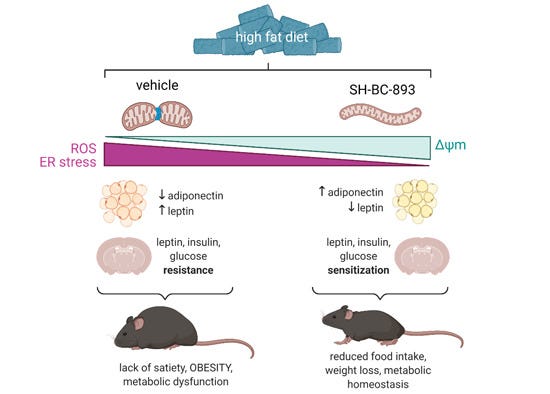Reshaping Mitochondria: A Path to Combat Obesity
Written on
Chapter 1: Understanding Obesity
Obesity is often defined as having a Body Mass Index (BMI) over 30, but this measurement is an oversimplification. BMI, calculated as weight in kilograms divided by height in centimeters squared, doesn’t account for body composition. For many, it serves as a basic gauge for assessing body fat. However, strength athletes might be classified as 'obese' due to their muscle mass, despite being in excellent health.
A more precise definition of obesity relates to the accumulation of excess body fat. Generally, men are considered obese when their body fat exceeds 25%, while women are viewed as obese at 30-32%, depending on the source. Data from the NHANES surveys conducted between 1999 and 2004 indicated that average body fat percentages for American men and women were approximately 28% and 40%, respectively. Unfortunately, these figures likely haven't improved. In reality, obesity has become commonplace.
While having some body fat is normal and even beneficial, excessive fat can lead to a range of health issues, such as cardiovascular diseases, type 2 diabetes, sleep apnea, and various cancers. It's important to note that some individuals classified as obese can still be healthy, while some non-obese individuals may not be.
The reasons behind obesity are multifaceted, extending beyond merely consuming too many calories. Factors like genetics, gut microbiota, certain medical conditions, and medications also play significant roles in determining energy balance.
Mitochondrial Dysfunction and Obesity
The mitochondria, tiny organelles responsible for energy production in our cells, are also implicated in obesity.
To understand this connection, we can look back at 1994 when molecular geneticist Jeffrey Friedman identified the hormone leptin. His research focused on why certain lab mice became obese while others maintained a healthy weight. He found that leptin, produced by fat cells and intestinal absorptive cells, signals the brain to indicate satiety.
Interestingly, while individuals with more body fat produce more leptin, they often develop leptin resistance, meaning their bodies fail to respond to its signals to stop eating. This resistance is closely linked to obesity.
The Impact of Diet on Mitochondria
Modern diets high in saturated fats can lead to excessive mitochondrial fission, which alters the structure of mitochondria from elongated tubes to short, dysfunctional blobs. This transformation diminishes their efficiency, as crucial metabolic processes occur in the mitochondrial membranes, and a larger surface area is needed for optimal functioning.
What if we could restore the tubular shape of mitochondria?
Research Breakthrough: Restoring Mitochondrial Shape
A recent study has explored this possibility using a synthetic sphingolipid known as SH-BC-893. This compound blocks proteins responsible for mitochondrial fission, potentially reversing their harmful fragmentation.
In experiments with both obese mice and cultured cells, researchers observed several promising outcomes:
- The compound prevented ceramide-induced mitochondrial fragmentation.
- It helped maintain the elongated shape of mitochondria in obese mice.
- Administration of SH-BC-893 led to improvements in circulating leptin and adiponectin levels, promoting weight loss and correcting metabolic dysfunction.

The researchers concluded that targeting mitochondrial fission could be a viable and effective strategy for addressing diet-induced obesity. However, it's essential to ascertain the compound's safety and efficacy in humans, as results seen in mice may not directly translate to human health.
The Balance of Mitochondrial Dynamics
It's important to recognize that while excessive mitochondrial fission can be detrimental, some degree of fission is necessary for healthy cellular function. Mitochondria undergo regular cycles of fission and fusion to maintain energy production.
In conclusion, prioritizing mitochondrial health may be an essential strategy in the fight against obesity.
Chapter 2: The Role of Lifestyle and Diet
The first video titled "How Obesity Dismantles Our Mitochondria" provides insights into how obesity impacts mitochondrial function and overall health.
The second video, "How to FIX Your Broken Mitochondria for Limitless Energy! | Dr. Ted Naiman," discusses strategies to restore mitochondrial health for improved energy levels.